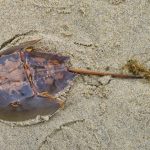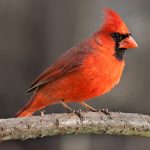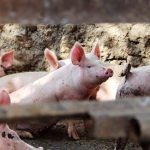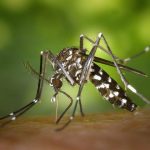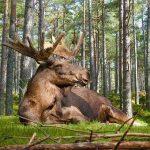In addition to its moderate temperature and strong artistic scene, Vancouver Island, off the coast of Canada’s Pacific coast, is home to the University of British Columbia. Victoria, British Columbia’s capital is located on the southern corner of the province and is known for its boat-lined Inner Harbour, neo-baroque Parliament Buildings, majestic Fairmont Empress Hotel, and English-style gardens.
On Vancouver Island, you may find black bears, cougars, wolves, elk, deer, painted turtle, common garter snake, and a variety of other animal and bird species, some of which are both plentiful and threatened in their habitat. On the west coast of Vancouver Island, British Columbia, Canada, sea otters in a raft rest in a kelp bed.
Black Bears
- Scientific Name: Ursus americanus
- Type of Animal: Mammals
- Diet: Omnivore

More than 120,000 black bears are thought to exist in British Columbia, with over 7000 on Vancouver Island, making it one of the most densely inhabited bear populations in the world. The Vancouver Island black bear is much darker in color and slightly bigger than the mainland bear, and it is one of British Columbia’s six subspecies.
The black bear has been kept primarily isolated from its mainland relatives for a long time, according to skeletal remains recovered on Vancouver Island going back up to 10,000 years. Black bears have a poor reproductive rate when compared to other species. This could improve in regions where there are numerous food sources, such as seafood.
Males generally don’t start reproducing until they’re five or six years old, although they can start as early as one and a half years old in unusual situations. Females acquire sexual maturity around the age of four and then breed every two to three years. The most usual number of children is two, however, it can range from one to five.
Black-Tailed Deer
- Scientific Name: Odocoileus hemionus
- Type of Animal: Mammals
- Diet: Herbivore

The Columbian Black-tailed Deer is one of three deer subspecies found in British Columbia that are closely related to one another. It most closely resembles the larger mule deer in appearance. Because they are often a cover-seeking animals, they are considered one of the most sought-after deer in terms of hunting. They are regularly sighted around the coastlines of Vancouver Island, and some have become accustomed to human contact, so you are quite likely to encounter them when visiting the island. Hunting, on the other hand, is a completely different animal altogether.
The majority of Black tail prefer shelter, and they are more likely to emerge from it when it is raining or nighttime. Even though black-tailed deer do not move in large herds like other deer, they can be seen grazing together in clear-cuts and cleared areas, and they will gather with other deer of the same sex when they are in the same location.
Typically, the alpha doe is the oldest mother and the first to give birth to a litter of babies. Young bucks will seek out the company of other bucks, and sparring will assist them in establishing their position in the hierarchy. While the Columbian Black tails are at their biggest in late November during rutting (mating), they can lose up to 25 percent of their weight over the winter months.
They shed their antlers in January and re-grow them during the course of the next summer. A reddish-brown tint appears on their coat during the summer, while a grey tint appears on their coat during the winter.
California Sea Lions
- Scientific Name: Zalophus californianus
- Type of Animal: Mammals
- Diet: Carnivores

California Sea Lions are mostly found in the southernmost region of Vancouver Island, however they have been known to go as far north as southern Alaska. Because of population growth in California and Mexico, the number of California sea lions wintering in British Columbia has increased during the 1970s, and the same is true in British Columbia. The number of individuals who live along the coast of the United States has climbed from 50,000 in 1970 to 300,000 now. On Vancouver Island, around 3-4000 people come each day. This website has further information about the increasing sea lion population.
The California sea lion’s color is often darker than that of the Steller sea lion, which is typically a light tan or reddish-brown tinge. Steller sea lions are typically lighter than California sea lions. The California and Steller sea lions are the two species of sea lions that are most common on Vancouver Island. Sea lions from California and Oregon spend the whole year here, with the exception of the months of September through May, when they spend the entire year in California and Oregon.
Compared to Steller males, California males can weigh up to 400 kg, whilst California males can only weigh 2500 kg. Female Steller’s sea lions are smaller than male California sea lions, weighing up to 450 kg in comparison to their male counterparts.
Cougars
- Scientific Name: Puma concolor
- Type of Animal: Mammals
- Diet: Carnivores

North America’s most fearsome feline and one of just a few mammals on the planet capable of hunting in this manner, the cougar is considered to be one of the most dangerous predators on the continent. Vancouver Island’s Mountain Lion (Felis concolor vancouverensis), often known as the Cougar of Vancouver Island, is a subspecies of the mountain lion Felis concolor, which may be found across North and South America.
British Columbia is home to an estimated 4000 cougars, with 600-800 of them living on Vancouver Island, making it the state with the highest concentration of this mountain cat in all of North America. It is in the island’s northeastern section where cougars may be found in the greatest numbers, as well as a greater number of black tail deer, which are a favorite food of the sly cat. They, like the Black tail deer, prefer mountainous, forested places with plenty of cover. It has a reddish brown coat that is somewhat darker than the coat of the mainland type.
Gray Whales
- Scientific Name: Eschrichtius robustus
- Type of Animal: Mammals
- Diet: Carnivores
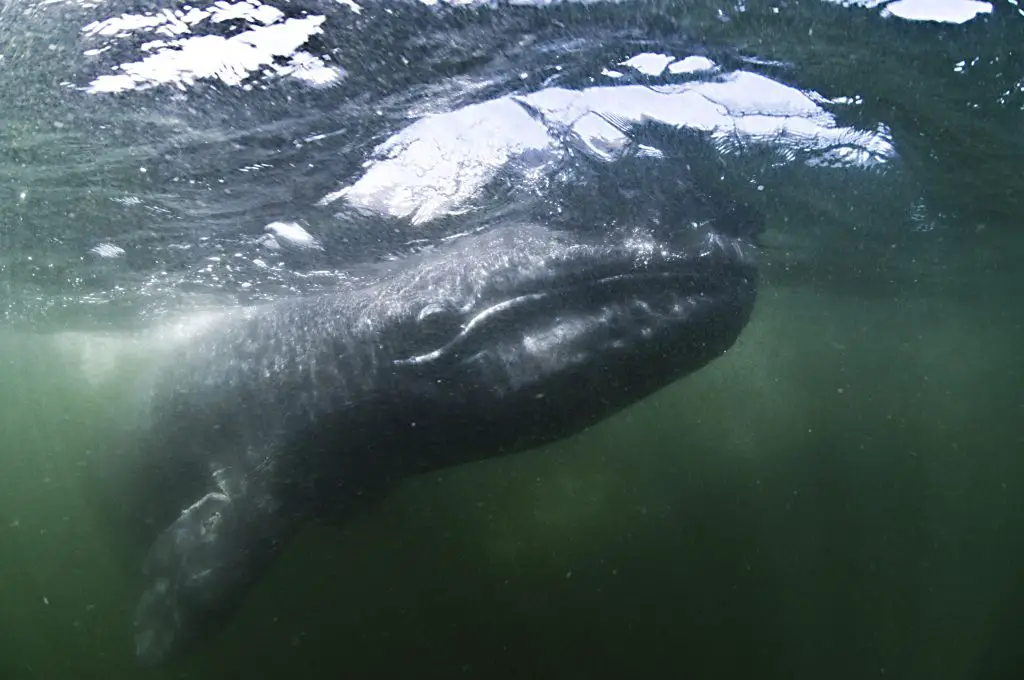
Pacific Gray whales travel north along the west coast of Vancouver Island every year from late February to April, a migration estimated to be over 20,000 strong. It is estimated that around 200 (regular) Gray Whales will feed and remain along the beach of Vancouver Island. When the Gray whale first came to land, the Pacific Rim Whale Festival, which takes place every March, honors this event. When it comes to migration routes, grey whales have the longest of any species, travelling up to 20,000 kilometres round-trip from their summer habitat in British Columbia and Alaska to the warmer waters off the coast of Mexico.
Gray whales move at a rate of 60 to 80 kilometres per day and are frequently close enough to land that they can be observed. While the vast majority will feed in Alaska, some may choose to dwell along the coast of British Columbia and establish themselves as “residents.” Every year, a small number of Gray Whales make their way to Vancouver Island.
Grizzly Bears
- Scientific Name: Ursus arctos horribilis
- Type of Animal: Mammals
- Diet: Omnivore

However, although grizzly bears do not reside on Vancouver Island throughout the year, you may go on a bear viewing trip to observe grizzlies on the mainland. There are around 14000 Grizzly Bears in British Columbia, and many of them live along the coast, where they feed on shellfish and salmon during the salmon season. Grizzlies have been known to swim to Vancouver Island on occasion, although this is a very rare occurrence.
The North American Grizzly Bear is a subspecies of the Brown Bear, which may be found in other parts of the world as well as in North America. The majority of Grizzlies in North America have a similar resemblance to one another in appearance. When Grizzly Bears emerge from hibernation, males weigh around 220 kg and females weigh approximately 130 kg. They will acquire between 30 and 40% of their overall weight in the weeks leading up to hibernation. Its claws are large and narrow, and it has a prominent shoulder hump, which is most likely the result of digging along the shore. Its color is yellow or brown.
The majority of Grizzlies in British Columbia’s coastal regions are a light brown to dark brown coloration, with some grizzlies being black. Grizlies walk slowly, their heads moving from side to side as they go. In contrast, grizzlies are extremely fast, reaching speeds of up to 55 kilometres per hour on steep slopes. They are also capable of reaching Vancouver Island and other surrounding islands due to their excellent swimming abilities. When Grizzlies are concerned, they will rise to their hind legs in order to have a better view of what is going on in their surroundings. Bears are not social creatures, and sows with their cubs are the only ones who remain in a group for long periods.
Humpback whales
- Scientific Name: Megaptera novaeangliae
- Type of Animal: Mammals
- Diet: Carnivore

Humpback whales are the largest of the whales that come to Vancouver Island to feed and breed. Humpback whales are migratory, spending the summers in cooler, more fruitful waters and the winters in warmer tropical and subtropical waters, where they breed and have their calves. The only exception is the Arabian Sea, where they may be seen all year round. During the summer months, the majority of humpback whales feeding in northern British Columbia migrate to Hawaii, where they spend the rest of the year.
Humpback Whales of southern British Columbia have been observed off the coastlines of Mexico and Hawaii for the second time this year. Beautiful breaches and tail slapping of the Humpback whales are a spectacle to see. In addition to their immense size and strength, humpback whales are recognized for making music that is far more powerful than any of those characteristics combined.
Orca Whales
- Scientific Name: Orcinus orca
- Type of Animal: Mammals
- Diet: Carnivore

Researchers from all over the world have been flocking to Vancouver Island to study Orca (Killer) whales for decades, making them the most well-studied species on the planet. In the 1970s, Michael Bigg developed a photo-identification technique that allowed researchers to identify individual Orca Whales. It wasn’t long before researchers were able to group pods and clans together and estimate population numbers, social structure, birth and death rates, food preferences, and migratory patterns, among other things.
Resident orcas, transient orcas, and offshore orcas are the three types of orca whales that exist. When males reach sexual maturity, they are around the age of 15 and begin mating when they are around the age of 20. They have a life expectancy of 30 years on average. When J1, the world’s oldest known person, died in 2010, it was believed that he was 59 years old.
Typically, female killer whales begin to develop at the age of 10, achieve peak fertility around the age of twenty, and are no longer fertile by the time they reach the age of 40. Females who have gone through menopause can live to reach 90 years old or more. According to reports, a resident orca who frequents the southern end of Vancouver Island may be as ancient as 104 years if she is still living.
White-Sided Dolphins
- Scientific Name: Lagenorhynchus obliquidens
- Type of Animal: Mammals
- Diet: Carnivore

Pacific White-Sided Dolphins are one of the most popular mammals to observe in the waters off the coast of Vancouver Island, drawing in both tourists and wildlife enthusiasts alike. Their most usual sightings are in large groups of 50 to 100 or more individuals in the northern and eastern parts of Vancouver Island.
Their curiosity and playfulness make them popular with passing boats, which they regularly bounce along behind. The finest site to see dolphins is in Johnstone Strait, which stretches north to the Queen Charlotte Islands and is the ideal place to observe them. It wasn’t until the mid-1980s that scientists realized that Pacific White-sided Dolphins were more than just a pelagic species; they had begun to occur in coastal waters on the north-eastern side of Vancouver Island and as far north as Queen Charlotte Strait.
According to estimates, the number of dolphins in British Columbia is generally around 25,000; however, accurate estimates are difficult to come by because dolphins are sociable and have an intense attraction to boats. Because of feed and other unknown factors, Pacific White-sided dolphins might migrate from off-shore to inshore and back several times over the summer months. Dolphins in British Columbia’s waters consume a variety of food, including salmon, herring, pilchards, anchovies, needlefish, squid, shrimp, Pollock, sablefish, rock cod, and other small fish.
River Otters
- Scientific Name: Lontra canadensis
- Type of Animal: Mammals
- Diet: Carnivore

The North American River Otter may be found in a variety of habitats on Vancouver Island. It is possible to find them in sites such as Esquimalt Ports and Lagoon, Telegraph Cove, the harbors of Tofino and Ucluelet, Nanaimo’s Jack Point, and anywhere else where there is a dock, estuary, or river to fish from. Because they may be found in both fresh and salt water, river otters are sometimes confused with sea otter species in photographs.
River otter males and females attain sexual maturity around the age of two, and they reproduce from December to April each year. The male initiates breeding by grabbing the female by the throat with his teeth, which is followed by 75 minutes of intense copulation by the female.
Females give birth to two to five kits, which are raised in dens made by other animals in hollow logs or tunnels dug by other animals. It takes around three weeks for a kit’s eye to open completely. When the kit is roughly two months old and its coat has begun to develop, it is exposed to water. For around 6 months, the mother spends her time teaching the kits how to swim and forage so that they may eventually survive on their own. As early as 8 weeks of age, the kits may be ready to leave the facility.
Steller Sea Lions
- Scientific Name: Eumetopias jubatus
- Type of Animal: Mammals
- Diet: Carnivore

Steller sea lions are the fourth largest pinniped in the world, ranking after the northern elephant seal, southern elephant seal, and walrus. Steller sea lions are the largest of the five sea lion species and the fourth largest pinniped in the world. They can be found from California to Alaska, but the populations in British Columbia and Alaska are far larger. The Steller sea lion, which has a population of around 25,000 in British Columbia, is the most frequent sea lion on Vancouver Island. They may be found all throughout Vancouver Island, although they are most typically observed from a boat since they prefer lonely rocks and small islands to live on.
Despite the fact that Steller sea lions and California sea lions appear to be similar in appearance, they are unique in color and size. With a maximum weight of 2500 pounds, the male Steller sea lion dwarfs the male California sea lion, which can weigh up to 400 kilograms with a maximum weight of 450 kilograms. Female Steller sea lions can be as large as male California sea lions, although the Steller’s pale coloring contrasts with the California’s dark chocolaty tint. In comparison to California sea lions’ low-frequency vocalizations, which sound more like barking, the roaring of Steller sea lions’ low-frequency vocalizations sound more like a roar.
Gray Wolfs
- Scientific Name: Canis lupus
- Type of Animal: Mammals
- Diet: Carnivore

One of the most secretive and reclusive creatures on Vancouver Island, the wolf is one of the most difficult to find. The Vancouver Island grey wolf, which is a subspecies of the mainland grey wolf, has been listed as an endangered species. Wolves, who often reside in packs of five to twenty individuals, prefer to stay away from human activities. They are most common in the northern part of the island, as well as in Barkley and Clayoquot Sounds, where they have the largest amount of human interaction with humans.
Among the animals, being blamed for the continuous decline of the Vancouver Island marmot is the wolf, which has aroused considerable controversy. The grey wolf and the Vancouver Island wolf are strikingly similar in terms of size and appearance, and they live in the same area. Despite its smaller size and heavier weight (males between 20 and 60 kg), the Vancouver Island wolf is commonly mistaken for being lighter in color than mainland wolves, with some individuals appearing almost completely white.
When larger prey such as black-tailed deer and Roosevelt elk are in short supply, these animals will prey on smaller prey such as squirrels, rodents, and beaver to supplement their diet. Further differentiating characteristic of the Vancouver Island subspecies is their increased life density, which may reach as high as 14 animals per square kilometer of land area.
Raccoons
- Scientific Name: Procyon lotor
- Type of Animal: Mammals
- Diet: Omnivore

Racoons are medium-sized creatures that, while intelligent, are not normally the type of wildlife that people are interested in seeing. On Vancouver Island, on the other hand, they can be found in great numbers. Racoons are more of a nuisance than anything else in Van Isle’s wild animals – Racoon residential districts, since they lurk around in the dark and fall over garbage cans in their quest for food, which they call “dumpster diving.” The black ring around their eyes may distinguish these mischievous little rascals.
Raccoons also have a long, active tail with bands of black and light-brown fur that rotate between the two colors. A range of hues, including grey, black, albino, and brown, are available for raccoons to choose from. Raccoons live for around five years on average.
Common Loons
- Scientific Name: Gavia immer
- Type of Animal: Brid
- Diet: Carnivore

The common loon is a migratory bird that breeds in North America, Greenland, and Iceland, among other places. They were given this name because of their clumsy, ungainly appearance when walking on land. They spend the winter along the Pacific and Atlantic coasts of Canada, and they were the inspiration for the Canadian “loonie,” a one-dollar coin with a loon on the reverse side that was introduced in 1999.
The common loon is the subject of many Native American legends, and the Inuit continue to kill over 4,500 loons for sustenance each year under legal conditions. Acid rain and pollution, as well as lead poisoning from fishing sinkers and mercury contamination from industrial waste, have all contributed to the extinction of these birds from specific lakes in eastern North America and the Caribbean.
Harbour Seal
- Scientific Name: Phoca vitulina
- Type of Animal: Mammals
- Diet: Carnivore
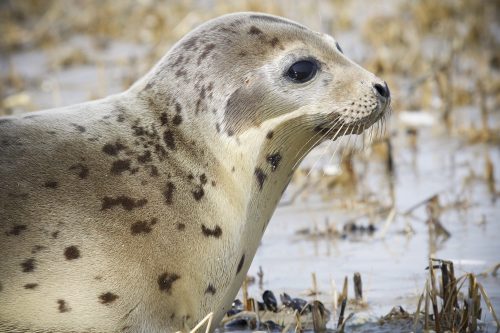
Harbour seals are Pinniped mammals that may be found all around the world, including the United States. You will most likely see them napping on rocky reefs, sand bars, and boulders all around Vancouver Island, whether you’re on a boat or walking along the shoreline. Seals, in contrast to sea lions, do not have external ear flaps, and their fur is grey rather than brown in hue. Because they have tiny, fuzzy front flippers and find it difficult to move their heads and shoulders while on land, they look to be sleeping all of the time.
Bats
- Scientific Name: Chiroptera
- Type of Animal: Mammals
- Diet: Omnivore

Rather than being a sort of wildlife to be admired in the wild, bats are more of a nuisance to keep away from your home. On Vancouver Island, there are 16 different species of bats, with the Little Brown Bat being the most common and widespread. A unique species of mammal, bats are a vital component of our ecosystem because they consume a large number of insects and their excrement, known as guano, is used to fertilize plants. If you spend any length of time on or near Vancouver Island, you will quickly realize that the environment is overflowing with different sorts of animals and plants.
Wildlife viewing opportunities on Vancouver Island are many and varied, thanks to the island’s unique flora and animals, which may be enjoyed by boat or on foot. Every year, thousands of people go to the waters surrounding Van Isle Marina for a variety of reasons, and this is just one of them. Bring your boat for the massive marina, but stay for the wildlife.
Western toad
- Scientific Name: Anaxyrus boreas
- Type of Animal: Amphibians
- Diet: Carnivore

The western toad is a big toad species endemic to western North America, measuring between 5.6 and 13 cm (2.2 and 5.1 in) in length. During the rainy season, A. boreas is commonly seen on roadways, and at other times, near water. For a toad, it can jump a long distance. Breeding takes place in mountainous places between March and July, and in lower-elevation areas as early as January.
The female may lay up to 17,000 eggs in strings that cling to flora and other things near the water’s edge. The western toad’s range stretches from western British Columbia and southern Alaska all the way down to Washington, Oregon. It bears a white or cream dorsal stripe and a dusky grey or greenish dorsal coloration with black spots containing skin glands. It has round, widely divided parotid glands that are bigger than the upper eyelids. It lacks cranial crests and has a speckled venter with horizontal pupils.
Males have smoother skin, less dorsal blotching, and nuptial pads (thickened skin) on their forefeet during the mating season compared to females. The dorsal stripe is faint or nonexistent in youngsters of this species. Large juveniles have yellow feet and significant dorsal and ventral markings.
Bronze frog
- Scientific Name Lithobates clamitans
- Type of Animal Amphibians
- Diet Carnivore
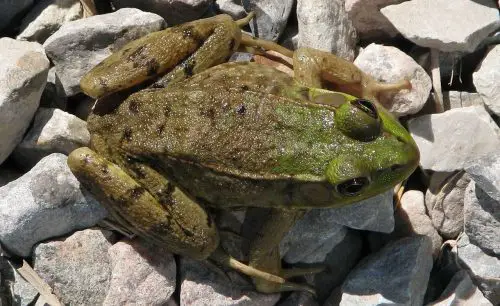
The bronze frog is a Lithobates clamitans subspecies found in the southeastern United States. A medium-sized frog around 7.5 to 12.5 cm (3 – 5 in) in length, with well-defined dorso-lateral ridges going from the rear of each eye down the back. The toes are highly webbed, with the second toe being significantly longer than the first. Individuals vary in color from dark green to brown or yellow, but all have little irregular black dots and a white to yellow ventrum. Cypress swamp specimens are frequently very dark brown or even black. Males’ necks are typically vivid yellow, and their tympanums are substantially larger than their eyes.
- Green Tree Frog
- Scientific Name: Hyla cinerea
- Type of Animal: Amphibians
- Diet: Carnivore

The American green tree frog is a species of tree frog found in the New World that is a member of the Hylidae family. It is the official amphibian of the states of Georgia and Louisiana, and it is a common backyard species that is popular as a companion animal. Color: green; size: medium; maximum length: 6 cm (2.4 in). The frog may reach a maximum length of 6 cm (2.4 in). Its bodies are normally green, ranging in color from a bright yellowish-olive to a bright lime green in hue.
The color may appear different depending on the lighting and temperature. A white, light yellow or cream-colored line going from their mouths or upper lips to their groynes may be seen on their skin, and they may also have little patches of gold or white on their skin. Silky skin covers their bodies, and their toe pads are enormous. Their abdomens have a variety of colors, ranging from pale yellow to white. Males are somewhat smaller than females, and their necks are wrinkled more than females.
Rough-Skinned Newt
- Scientific Name: Taricha granulosa
- Type of Animal: Amphibians
- Diet: Carnivore
An American newt that releases a potent poison from its skin is known as the rough-skinned newt or the rough skin newt. It may be found in the United States and Canada. An orange to yellow underbelly covering the head, legs, and tail distinguishes this stocky newt from others. It has a rounded snout that ranges from light brown to olive or brownish-black on the top and a contrasting light brown to olive or brownish-black on the bottom.
The skin is gritty, but during the mating season, males have smooth skin, which is a welcome change. Their snout-to-vent length ranges from 6 to 9 cm, while their total length ranges from 11 to 18 cm. They are distinguished from the California newt by their smaller eyes, golden irises, V-shaped tooth patterns, and continuously black eyelids. Males may be distinguished from females during the breeding season by the tremendously expanded vent lobes and cornified toe pads that they have on their feet.
- Common Garter Snake
- Scientific Name: Thamnophis sirtalis
- Type of Animal: Reptile
- Diet:Carnivore

Garter snakes are a kind of natricine snake that is endemic to North America and may be found in all parts of the continent, including the Arctic and Antarctica. Their average total length (including tail) is around 55 cm (22 in), and their maximum total length (including tail) is around 137 cm. The majority of common garter snakes have a yellow striped pattern on a black, brown, or green background, and their average total length (including tail) is around 22 in (54 in). A typical individual weighs 150 grams, which is considered average.
Garter snakes are small and slender snakes with slender bodies. Only a few grow to reach greater than 4 ft. (1.2 m) in length, with the vast majority remaining shorter. The bulk of them has longitudinal stripes in a range of colors that run the length of them.
Colors such as green, blue, yellow, gold, red, orange, brown, and black can be seen on common garter snakes, as well as a variety of other colors. The common garter snake is a diurnal snake, meaning that it is most active during the day. During the summer, it is most active in the mornings and late afternoons; during cooler seasons or climates, it is most active in the warm afternoons and evenings.
Are There Any Similar Animals Between Easter Island and Vancouver Island?
The animals of easter island are unique to the island and can’t be found on Vancouver Island. The isolated location of Easter Island has resulted in the evolution of distinctive plant and animal species. Vancouver Island, on the other hand, hosts a different array of wildlife due to its different geographic and ecological factors.
Painted Turtle
- Scientific Name: Chrysemys picta
- Type of Animal: Reptile
- Diet: Omnivorous

The painted turtle is the most common natural turtle found in North America. Throughout the world, from southern Canada to northern Mexico, and from the Atlantic to the Pacific, it may be found in freshwater environments with slow-flowing currents. The male-painted turtle is somewhat smaller than the female-painted turtle, measuring 13-25 cm (5-10 in) in length on average.
The turtle’s top shell is black and smooth, with no ridges or ridged areas. It has olive to black skin with red, orange, or yellow stripes on its limbs and a striped pattern on its back. On the top shell segments, the eastern subspecies are distinguished by its straight alignment; on the bottom shell, the midland is distinguished by a large grey mark; and on the bottom, the shell of the western subspecies is distinguished by a red pattern. Painted Turtles mostly feed in the water, and they are capable of detecting and capturing prey even in severely gloomy conditions.
Despite the fact that rats, dogs, and snakes regularly prey on turtle eggs and hatchlings, the adult turtles’ strong shells protect them from the majority of potential predators. The painted turtle is only active during the day, when it basks on logs or rocks for long periods, relying on the warmth of its surroundings for survival. Winter hibernation for the turtle takes place under the mud at the bottom of ponds and other bodies of water. The turtles’ breeding seasons are in the spring and the fall. Females construct nests on land and lay their eggs during the months of late spring and mid-summer.


